 W
WIn biology, mating is the pairing of either opposite-sex or hermaphroditic organisms, usually for the purposes of sexual reproduction. Some definitions limit the term to pairing between animals, while other definitions extend the term to mating in plants and fungi. Fertilization is the fusion of two gametes. Copulation is the union of the sex organs of two sexually reproducing animals for insemination and subsequent internal fertilization. Mating may also lead to external fertilization, as seen in amphibians, fishes and plants. For the majority of species, mating is between two individuals of opposite sexes. However, for some hermaphroditic species, copulation is not required because the parent organism is capable of self-fertilization (autogamy); for example, banana slugs.
 W
WAmplexus is a type of mating behavior exhibited by some externally fertilizing species in which a male grasps a female with his front legs as part of the mating process, and at the same time or with some time delay, he fertilizes the eggs, as they are released from the female's body. In amphibians, females may be grasped by the head, waist, or armpits, and the type of amplexus is characteristic of some taxonomic groups.
 W
WAnimal sexual behaviour takes many different forms, including within the same species. Common mating or reproductively motivated systems include monogamy, polygyny, polyandry, polygamy and promiscuity. Other sexual behaviour may be reproductively motivated or non-reproductively motivated.
 W
WA courtship display is a set of display behaviors in which an animal, usually a male, attempts to attract a mate; the mate exercises choice, so sexual selection acts on the display. These behaviors often include ritualized movement ("dances"), vocalizations, mechanical sound production, or displays of beauty, strength, or agonistic ability.
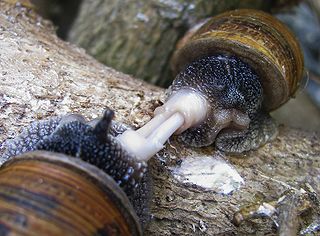 W
WThe mating of gastropods is a vast and varied topic, because the taxonomic class Gastropoda is very large and diverse, a group comprising sea snails and sea slugs, freshwater snails and land snails and slugs. Gastropods are second only to the class Insecta in terms of total number of species. Some gastropods have separate sexes, others are hermaphroditic. Some hermaphroditic groups have simultaneous hermaphroditism, whereas some sequential hermaphroditism. In addition, numerous very different mating strategies are used within different taxa.
 W
WThe Guérewol is an annual courtship ritual competition among the Wodaabe Fula people of Niger. Young men dressed in elaborate ornamentation and made up in traditional face painting gather in lines to dance and sing, vying for the attentions of marriageable young women. The Guérewol occurs each year as the traditionally nomadic Wodaabe cattle herders gather at the southern edge of the Sahara before dispersing south on their dry season pastures.
 W
WIn evolutionary psychology and behavioral ecology, human mating strategies are a set of behaviors used by individuals to select, attract, and retain mates. Mating strategies overlap with reproductive strategies, which encompass a broader set of behaviors involving the timing of reproduction and the trade-off between quantity and quality of offspring.
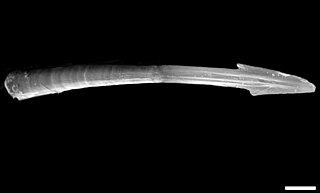 W
WA love dart is a sharp, calcareous or chitinous dart which some hermaphroditic land snails and slugs create. Love darts are both formed and stored internally in a dart sac. These darts are made in sexually mature animals only, and are used as part of the sequence of events during courtship, before actual mating takes place. Darts are quite large compared to the size of the animal: in the case of the semi-slug genus Parmarion, the length of a dart can be up to one fifth that of the semi-slug's foot.
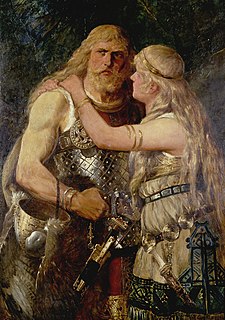 W
WMarriage, also called matrimony or wedlock, is a culturally recognised union between people, called spouses, that establishes rights and obligations between them, as well as between them and their children, and between them and their in-laws. The definition of marriage varies around the world, not only between cultures and between religions, but also throughout the history of any given culture and religion. Over time, it has expanded and also constricted in terms of who and what is encompassed. Typically, it is an institution in which interpersonal relationships, usually sexual, are acknowledged or sanctioned. In some cultures, marriage is recommended or considered to be compulsory before pursuing any sexual activity. When defined broadly, marriage is considered a cultural universal. A marriage ceremony is called a wedding.
 W
WMate-choice copying, or non-independent mate choice, is simply when a female of an animal species copies another fellow female's mate-choice. In other words, non-independent mate-choice is when a female's sexual preferences get socially inclined toward those of its fellow female. This behavior is speculated to be one of the driving forces of sexual selection and the evolution of male traits. It is also hypothesized that mate-choice copying can induce speciation due to the selective pressure for certain, preferred male qualities. Moreover, mate-choice copying is one form of social learning in which animals behave differently depending on what they observe in their surrounding environment. In other words, the animals tend to process the social stimuli they receive by observing the behavior of their conspecifics and execute a similar behavior to what they observed. Mate choice copying has been found in a wide variety of different species, including : invertebrates, like the common fruit fly ; fish, such as guppies and ocellated wrasse; birds, like the black grouse; and mammals, such as the Norway rat and humans. Most studies have focused on females, but male mate copying has been also found in sailfin mollies and humans.
 W
WMating in fungi is a complex process governed by mating types. Research on fungal mating has focused on several model species with different behaviour. Not all fungi reproduce sexually and many that do are isogamous; thus, the terms "male" and "female" do not apply to many members of the fungal kingdom. Homothallic species are able to mate with themselves, while in heterothallic species only isolates of opposite mating types can mate.
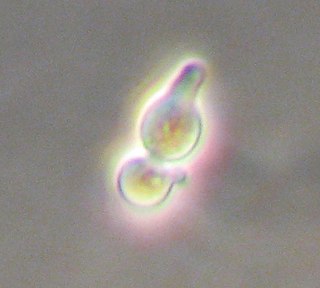 W
WThe yeast Saccharomyces cerevisiae is a simple single-celled eukaryote with both a diploid and haploid mode of existence. The mating of yeast only occurs between haploids, which can be either the a or α (alpha) mating type and thus display simple sexual differentiation. Mating type is determined by a single locus, MAT, which in turn governs the sexual behaviour of both haploid and diploid cells. Through a form of genetic recombination, haploid yeast can switch mating type as often as every cell cycle.
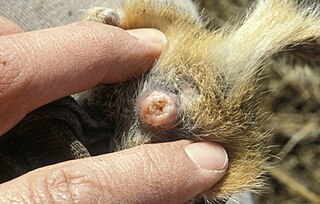 W
WA mating plug, also known as a copulation plug, sperm plug, vaginal plug, sement or sphragis, is gelatinous secretion used in the mating of some species. It is deposited by a male into a female genital tract, such as the vagina, and later hardens into a plug or glues the tract together. While females can expel the plugs afterwards, the male's sperm still gets a time advantage in getting to the egg, which is often the deciding factor in fertilization.
 W
WMicrochimerism is the presence of a small number of cells that originate from another individual and are therefore genetically distinct from the cells of the host individual. This phenomenon may be related to certain types of autoimmune diseases; however, the mechanisms responsible for this relationship are unclear. The term comes from the prefix "micro" + "chimerism" based on the Chimera of Greek mythology.
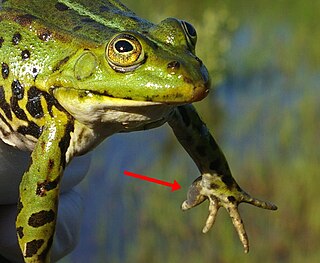 W
WA nuptial pad is a secondary sex characteristic present on some mature male frogs and salamanders. Triggered by androgen hormones, this breeding gland appears as a spiked epithelial swelling on the forearm and prepollex that aids with grip, which is used primarily by males to grasp females during amplexus. They can also be used in male–male combat in some species.
 W
WPanda pornography refers generally to movies depicting mating pandas, intended to promote sexual arousal in captive giant pandas. Under zoo conditions, the animals have, in general, proven unenthusiastic about mating, placing their species in danger of extinction.
 W
WPenis fencing is a mating behavior engaged in by many species of flatworm, such as Pseudobiceros hancockanus. Species which engage in the practice are hermaphroditic; each individual has both egg-producing ovaries and sperm-producing testes.
 W
WSexual cannibalism is when a female cannibalizes her mate prior to, or after copulation. It is a trait observed in many arachnid orders and several insect orders. Several hypotheses to explain this seemingly paradoxical behavior have been proposed. The adaptive foraging hypothesis, aggressive spillover hypothesis and mistaken identity hypothesis are among the proposed hypotheses to explain how sexual cannibalism evolved. This behavior is believed to have evolved as a manifestation of sexual conflict, occurring when the reproductive interests of males and females differ. In many species that exhibit sexual cannibalism, the female consumes the male upon detection. Females of cannibalistic species are generally hostile and unwilling to mate; thus many males of these species have developed adaptive behaviors to counteract female aggression.
 W
WSexual conflict or sexual antagonism occurs when the two sexes have conflicting optimal fitness strategies concerning reproduction, particularly over the mode and frequency of mating, potentially leading to an evolutionary arms race between males and females. In one example, males may benefit from multiple matings, while multiple matings may harm or endanger females, due to the anatomical differences of that species.
 W
WSexual intercourse is sexual activity typically involving the insertion and thrusting of the penis into the vagina for sexual pleasure, reproduction, or both. This is also known as vaginal intercourse or vaginal sex. Other forms of penetrative sexual intercourse include anal sex, oral sex, fingering, and penetration by use of a dildo. These activities involve physical intimacy between two or more individuals and are usually used among humans solely for physical or emotional pleasure and can contribute to human bonding.
 W
WTraumatic insemination, also known as hypodermic insemination, is the mating practice in some species of invertebrates in which the male pierces the female's abdomen with his aedeagus and injects his sperm through the wound into her abdominal cavity (hemocoel). The sperm diffuse through the female's hemolymph, reaching the ovaries and resulting in fertilization.
 W
W